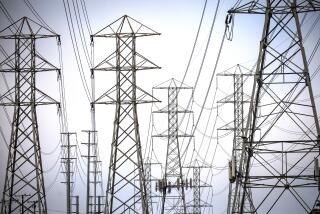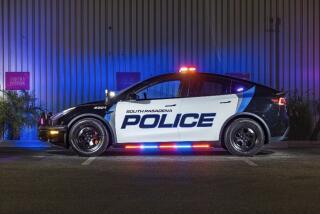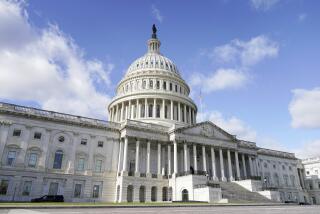For Energy Savings, Watch Traffic Light
- Share via
If the traffic signal on your street looks a little brighter these days, that may be because it’s using less energy.
And if that seems a contradiction, it’s actually new electric bulb technology that a lot of Orange County cities are adopting as they seek to reduce energy costs.
The new energy-efficient bulbs are called light-emitting diodes--LEDs, in energy parlance.
The attraction to LEDs grew quickly last summer when Southern California Edison began offering cities sizable rebates to install them in red and green traffic signals. (Rebates aren’t offered for the amber lights because they aren’t on very long in a traffic signal’s full cycle.)
So far, 23 Orange County cities have installed them or signed up to replace the standard incandescent bulbs with LEDs.
Energy savings can be measured in a variety of ways, but cities say the new bulbs are generally up to 85% more efficient.
“It’s the equivalent of shutting off a 500-watt bulb each time the light changes,” said Cathy Melton, Edison’s director of energy efficiency programs for big customers.
For the 76 Southern California cities signed up so far, that means a total potential savings of 69 million kilowatt-hours each year.
The primary incentive for cities to switch is cost. But the brighter signals, which mean greater visibility, are a welcome bonus.
The LEDs appear brighter for two reasons:
* Instead of one bulb, the signal is lit by a cluster of miniature bulbs--close to 100 for most lights. Together, they put out a more intense beam. Look close enough and you can see the pattern of dots the lights form inside the signal.
* Traffic lights collect lots of dust and dirt. Being new, the replacements are dust free--for now.
The Edison rebates cover more than 90% of a city’s cost to retrofit its traffic lights.
Almost a year ago, Fountain Valley became the first Orange County city to take advantage of the program. Its studies indicate an 80% savings per month on the city electric bill for traffic lights, according to city engineer Mark Lewis.
“The best thing since sliced bread,” Lewis said. “The public likes them, they save money and you get somebody else to pay for them. Tell me where to sign any time for a deal like that.”
The Edison rebates were actually ordered by the state’s Public Utilities Commission, using the “public good” charge that’s part of customers’ electric bills. With the state’s energy crisis focusing attention on Edison’s problems the past year, this is one program the utility is ready to boast about.
There is no downside, said Warren Siecke, traffic engineer for Placentia and Brea. Together, the cities have close to 100 signal-controlled intersections. Each city expects to save about $40,000 a year.
The LEDs have a five-year warranty from General Electric, the main manufacturer, and are expected to last seven years, meaning cheaper maintenance. The old type had to be replaced almost annually.
“We were already planning to switch to the LEDs for our red lights,” Siecke said. “But when we heard about Edison’s rebates, I got in applications right away and we went with both the red and the green.”
Siecke said he first heard about the LEDs from Anaheim, which made the switch two years ago without a rebate offer. (Anaheim operates its own utilities.)
“All the major cities across the country are throwing out their old lights and going with these,” Siecke said. “It will be the new standard.”
The 23 cities that have switched, or signed up to do so: Anaheim, Brea, Costa Mesa, Cypress, Fountain Valley, Fullerton, Garden Grove, Huntington Beach, Irvine, Laguna Beach, Laguna Hills, Laguna Niguel, Lake Forest, Los Alamitos, Newport Beach, Orange, Placentia, Rancho Santa Margarita, Santa Ana, Stanton, Tustin, Westminster, Yorba Linda.


